Coronavirus is the biggest threat we have faced in the UK in a generation, and more and more families have become affected. On Monday the 23rd of March, the UK Prime Minister effectively locked down the country, with individuals only permitted to leave their homes for exercise, shopping for essentials, and work. Furthermore, schools are now closed to all children except those who have parents that are keyworkers, with no date marked for when they will reopen.
The prospect of weeks, or possibly months, at home with the children is a daunting one, especially with no opportunities for social activities, such as soft play centres, swimming, or the cinema. Here are 101 things that will help you get through it and come out as a stronger family unit on the other side. We have included tips to help you cope with the mental and emotional burden, links to online resources, and activities that will keep your children occupied.
Lockdown – Tips For Maintaining Mental & Emotional Well-Being
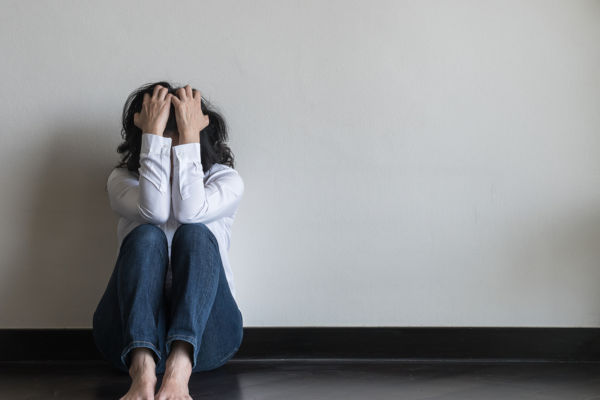
For the moment, and quite rightly, everyone is focused on the physical aspects of Covid-19 and the economic fallout. However, the long-term mental health affects should not be underestimated, not only for adults, but for children as well who are faced with a breakdown of routine and structure. Here are some steps that can have a positive effect.
1. Keep A Routine
If you need to stay at home for a long period of time days can easily merge into one another without a routine. It might be tempting to spend each day in pyjamas watching TV or playing on screens, but that will be significantly detrimental to the mental health of everyone in the house. Children in particular thrive on routine whilst research has shown that routine can help to alleviate stress.
We’re not suggesting that you set a timetable for your children akin to something they might follow in school, but simple things, like getting dressed each morning, having a set time for screen use, exercise, and meals, will really make a difference.
2. Ditch The Mum Guilt
Already, social media is full of groups of parents who are coming up with new and creative ways of educating their children at home during the outbreak. These groups, and indeed, the activities that we have listed below, will be very useful when you are in need of ideas. However, the important thing to remember is that there is no need for you to try and replicate school.
You need to do what works best for your family in that moment each day. If it means getting your child to write a story then fantastic, but if it means that you all cuddle up and watch a movie, that is also fantastic. Do what needs to be done to maintain your family’s emotional health, not just your child’s education attainment.
3. Remember That Going Outside Is Ok
Unless you have symptoms of the virus, you can go outside once a day for exercise. Spending time outdoors every day will significantly boost your mental health, as research has shown, and this is needed now more than ever. You can go for a walk or a run, but only alone or with other members of your household. You should not drive anywhere and stick to places you can walk to. Why not get the map out and see if there are any footpaths in your area that you haven’t discovered yet?
4. Limit Your Exposure To The News & Social Media
For the media, the Coronavirus is a big payday. Constant updates mean constant clicks resulting in ad revenue. Screaming headlines prophesising doom are guaranteed money winners. Push notifications alert us of all the latest developments and it feels like everything is spiralling into a pit of anguish and despair at an ever increasing rate.
Whilst Coronavirus is significantly more dangerous that flu, it’s worth pointing out that thousands of people die each year from flu, and yet we don’t have daily counts of these deaths from the media. If we did, it would cause so much anxiety that most people would never leave their houses.
Keeping informed is important, but the best way to do this is to source information directly from the government website and not from news organisations who are making money from people’s fears. Give yourself set times to check for updates, maybe once in the late morning and once in the early evening, and then switch off the rest. Avoid social media sites or set up filters to remove mentions of the virus. Disable push notifications for news apps on your phone. Your mental health will thank you.
5. Encourage Your Child To Talk To You About Their Worries
Children are prone to worrying, especially when there are things going on around them that they don’t understand. Just like us, their worlds have been turned upside down and there is no school, or playdates to keep them distracted. Make sure you check in with your child regularly about their fears and let them know they can talk to you about anything. The charity, Heads Together, has some great tips for getting your child to open up to you.
6. Look For The Helpers
American television personality Fred Rogers once said:
“When I was a boy and I would see scary things in the news, my mother would say to me, ‘Look for the helpers. You will always find people who are helping’.”
When things feel overwhelmingly awful, look around for signs of hope. Already, scientists have started animal testing on vaccinations and the scientific community has come together like never before to fight this disease. China, who have largely managed to get their outbreak out of control, have been sending doctors and medical equipment to Italy, where the disease has infected thousands of people. In communities in the UK, people are posting postcards through letterboxes offering help to those who may be self-isolating and Facebook groups have cropped up to coordinate volunteering efforts and share useful information.
When you feel like you are losing hope, look for the helpers.
7. Keep Moving
Exercise has been proven time and time again to have positive effects on mental health. There are plenty of videos online with exercise routines, and we have linked some below that you can do with the kids. Alternatively, get on the trampoline in the garden, jog on the spot, or have a disco with everyone dancing.
8. Find Space
Make sure that everyone who needs a little space from each other has the opportunity to get it. If it means putting the children on their tablets so you can have a cup of tea then so be it. If you have a partner agree times when you can escape whilst the other person steps up with the kids and vice versa.
9. Plan For A Reward
Remember, your child will behave differently for you than they will for a teacher, and whilst your teacher might get your child to practice phonics or do some maths questions, you might find it a little harder. So, consider planning for a reward at the end, using a sticker chart. For example, you could award a credit for each task completed during the day, and each credit could be equal to a sum of money to spend online to order a toy.
Not only will this help to motivate your child, but it will give them something to look forward to once things start to get back to normal.
Online Resources For Home Schooling During Quarantine
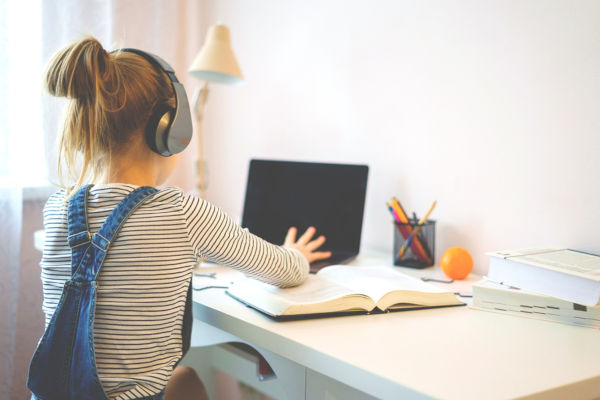
Many schools already have access to several online learning portals and are providing parents with login accounts. However, there is a wealth of additional resources online and the good news is that many providers are offering free access for a set period as a result of the Coronavirus outbreak. Here are some of our favourites.
10. Twinkl
Twinkl is packed with teacher created resources, including activity sheets and other tasks that can be completed at home. There is usually a subscription fee for parents to access the resources, but the company recently announced that they are offering free access for a limited time for parents. What’s more, they have put together some school closure learning resource packs covering all years from reception up to year 6.
11. Teach Your Monster To Read
Teach Your Monster To Read is a phonics based learning resource from the Usborne Foundation, with apps that offer games and other tasks to help your child learn to read or become more confident in their phonics knowledge and understanding. It has won numerous awards and is often recommended by schools. Normally, there’s a charge for the app, but as a result of the coronavirus outbreak, it is now completely free.
12. TTS Group
TTS Group are an educational supply company that provide stationary, equipment, and resources for schools across the UK, including learning activity packs. They have put together some excellent home learning resource packs based on the school curriculum. They are available to download free of charge and there are different packs for EYFS, Key Stage 1, and Key Stage 2.
13. Kaligo
Kaligo is a touchscreen handwriting app available on Apple and Android devices. It has won several awards and the app uses AI to allow children to progress at their own speed and according to their ability. Whilst it won’t replace pen and paper, it is useful for additional practice and a good way of introducing letter formation to younger children. Best of all, as with many other providers, the company behind the app is offering one month’s free access to parents during the coronavirus outbreak.
14. Phonics Hero
Phonics Hero is a fun app available on Android and Apple devices. It covers the 44 phonics sounds and has over 850 different games to play. Parents can sign up for a free 7-day trial and the team are also offering schools the chance to create free accounts for children for up to 30 days.
15. Story Time From Space
Story Time For Space does what it says on the tin. Astronauts on board the International Space Station have recorded videos of themselves reading children’s stories. There are also videos of science experiments that the astronauts have recorded that cover some basic science concepts. It’s completely free to use.
16. Khan Academy
Khan Academy is a not for profit organisation that provides educational resources to students around the world, with online lessons using videos and practice exercises. All of the content is free to use. Being an American site, it doesn’t follow the National Curriculum, but there is plenty of content on there that will feed your child’s enquiring mind.
17. Scratch
With plenty of free time on their hands, your child could become the next big game designer thanks to Scratch. This free, online platform teaches your child how to code games and animations, that can then be shared for other children to watch and play. The platform has been designed by the MIT Media Lab and it’s heavily moderated to ensure that content is kept safe for your child. It’s aimed at children aged 8 and above, but there is also a junior version for children aged 5-7.
18. National Geographic Kids
Here at Mumblog HQ we love the books and magazines produced by National Geographic for kids, and you could consider a magazine subscription as one way of entertaining the children over the shutdown period. However, if money is tight, then National Geographic Kids is a fantastic website packed with facts, quizzes, challenges, games, and more. It also has various resources linked to the UK primary school curriculum.
19. Paw Print Badges
The Paw Print Trust was set up to raise funds for Scouting and Girl Guiding Associations in the UK. Like the Scouts and Girl Guides, they provide embroidered badges to children who complete challenges, with lots to choose from. The badges start at just £1.35 and can be ordered online to give to children who complete the challenges. However, ordering a badge is not necessary to access the challenge resource packs that are completely free to download and packed with activity ideas for children to complete. There are also free activity sheets available to download. This is a fantastic alternative for children who are currently unable to attend Scouts and Guiding groups due to the shutdown.
20. Oxford Owl
If your child started reading with Biff, Kip, and Chipper, then your school will be using the Oxford Reading Tree scheme from Oxford University Press. The publisher has a website for parents where you can access over 100 free e-books from the scheme, covering beginner readers right up to age 11. There are also free activity sheets available to download covering an array of topics.
21. Code.org
Code.org is an American non-profit organisation that aims to promote computer science learning to students from groups that are under-represented in this area. They have a wealth of resources for teaching children how to code, with apps, courses, online tutorials, and videos. Whilst they normally work with schools, for the coronavirus outbreak they have put together a webpage with links to their free content.
22. Topmarks
Topmarks is an online resource mostly aimed at teachers looking for content for their interactive whiteboards. However, much of the content on the site can also be used on tablet computers at home, and it’s free to use. There are games covering various topics, guides for parents who are looking to encourage learning at home, as well as links to other resources, some of which may have charges for use.
23. CBeebies
CBeebies has been enabling stressed out parents to enjoy a cup of tea in peace for years, and during the virus outbreak there is no doubt that the TV channel, aimed at pre-schoolers, will continue to provide much needed respite. However, the channel also offers a brilliant selection of online content, much of which has an educational purpose. There are puzzles, games, and quizzes that can be played on tablets or computers, plus videos featuring all your child’s favourite characters.
The BBC recently announced that it will be looking at ways of entertaining and educating children during the outbreak and as part of that the CBeebies website has been updated with some fantastic ideas for entertaining your child indoors.
25. Pobble 365
Used by over 100,000 teachers, Pobble 365 is a great resource for children who are confident in their ability to write sentences. Each day the website’s homepage has a new image that will hopefully inspire your child to write. In addition to the image, there are writing prompts, and questions about grammar to complete. It’s completely free to use.
26. Scholastic Learn At Home
Best known for their huge range of educational books, publisher Scholastic have created a new website for parents of children who are stuck at home. The Scholastic Learn At Home website will have around 20 days worth of learning materials for children to work through once complete (the first few days are already live) and each day offerings things like e-books to read, quizzes, drawing activities, and more. It is American, so you will have to navigate through their grade system to work out which area of the site is best for your child.
27. Phonics Play
Phonics Play has been created by a literacy teacher and is widely used by teachers in the UK to reinforce learning. It’s packed with games that will encourage children to practice their letter sounds and blending and for children who are more established with phonics there are spelling activities and various games. It’s normally available on a subscription basis but is currently free to use as part of the coronavirus outbreak.
28. Lightbot
Lightbot is a free app that introduces children to some basic concepts of coding using a fun game that involves getting a robot to move around obstacles. It’s available on Android, Apple, and on a web browser on your computer, and has been designed by Code.org in collaboration with Computer Science Education Week.
29. The Children’s University of Manchester
This fantastic initiative from the University of Manchester is aimed at key stage 2 children (7-11 years). Although the resources on this website have been designed for use by teachers in the classroom, they can also be used at home. There are various topics, including science and history, with activities and games to play.
30. Science Fun For Everyone – Experiments
This is an American site for an organisation that offers science themed camps and school activities, but under their Kids Zone section you will find a list of science experiments that you can try at home. Be warned, most of them involve a lot of mess.
31. BBC Bitesize
BBC Bitesize has been supporting children in education for years. In fact it’s so old that some of us at Mumblog used it to revise for their exams when it first launched. It’s packed with activities, revision guides, games and more. As part of the BBC’s efforts to entertain and inform the nation during the coronavirus outbreak, this website will be updated in the coming weeks to provide daily activities to support home learning.
Fun Games & Challenges
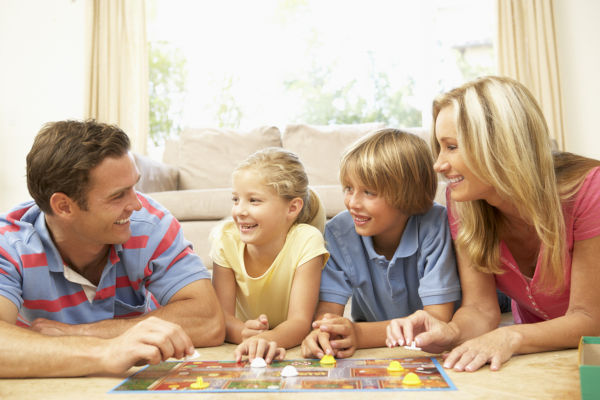
We all need laughter in times of sadness, and these activities, that can all be done in your home and garden, will help bring a little joy to your household.
33. Special Things Scavenger Hunt
It’s hard to find joy in troubling times, and this activity is great for reminding children of happier moments and things. Challenge your children to each find an item for each category on the list. You can adapt it to suit your family:
- Something that is your favourite colour
- Something that makes you smile
- Something that makes you think of a happy memory
- Something that you like to smell
- Something that is useful to you / helps you to do something
34. Macaroni Challenge
Fill a small bowl with macaroni. Give your child the macaroni, a second bowl, and some tweezers. Challenge them to see how many pieces of macaroni they can transfer to the empty bowl using the tweezers in 20 seconds. Make it more difficult by blindfolding them, or insisting they use their non-dominant hand. This is a great activity for younger children as it promotes fine motor skills.
35. Toy Tea Party
Host a toy tea party. Get your child to make some invitations (sneaking in some letter practice), and perhaps make some biscuits or a cake to have at the party. Get all the toys seated with plates and put on some party tunes.
36. Build A Sofa Fort
Grab blankets, move the cushions and build the best sofa fort possible. Encourage your child to read a book by making it into a reading den with a torch and some extra cushions to make it more comfortable.
37. Play Musical Statues
Get the whole family involved with a game of musical statues. If you have a Google Home you can even ask Google to “Play Musical Statues” and the AI will host the game for you.
38. Make A Movie
If you have a smart phone it’s pretty easy to make a short movie, with a wealth of apps that will help you with the editing. Make use of those world book day costumes and any other bits of fancy dress you have around the house and get your children to think of a story they could act out in front of the camera.
39. Play Board Games
Sometimes we forget that a lot of pleasure can be found from the simple things in life. In many households, board games have been relegated to the back of cupboards as games consoles have taken over, but they give families the opportunity to join together and have fun. They also teach your child valuable lessons such as taking turns, and having fun even if you don’t always win.
40. Make A New Board Game
If you don’t have any board games or simply fancy a change, then why not try and make a board game. An old cardboard box can be transformed into the base and you could base it on a theme, add action cards, or even just make your own colourful version of snakes and ladders.
41. Listen To An Audio Book Together – For Free!
Amazon’s Audible service is currently offering free audio books for children to listen to on a web browser. The selection is fairly limited, but there are quite a few classics on there. You don’t need an Amazon account to listen.
42. Have A Cinema Afternoon
The new Disney Life app has launched in the UK and it’s available at the bargain price of £5.99 per month. The app gives you access to hundreds of films and television shows from Disney, Pixar, Marvel, Star Wars, and National Geographic. What’s more, you can get access for free for 7 days with their trial offer, so why not take advantage and have an afternoon at the movies? You could go for the full experience by making your own tickets, selling popcorn for pretend money, and turning the lights down low before settling into the movie experience.
43. Frozen Eggs
Gather up your child’s toy dinosaurs or animals, put one in a balloon, fill the balloon with water to make an egg shape, and tie it up before placing in the freezer. Once frozen, peel the balloon away and give it to your child to get them to help the creature “hatch” by digging into the ice with whatever tools you feel happy with your child using. You can add food-colouring to the water for an additional sensory element.
44. Lego Challenge
Challenge your child to build something with Lego. It could be something simple like a small house, or something that requires a bit more engineering like a catapult. If you have a class WhatsApp group or similar then you could ask the other parents to get their children to join, sharing photos and videos, providing another way to keep your child in contact with their classmates.
45. Go Stargazing
Now is a great time to venture into the garden and look up at the night sky, because it still gets dark relatively early and your child doesn’t need to get up early in the morning to go to school. You don’t need any fancy equipment, as there is plenty to see with the naked eye. Astronomy Now has a useful star chart to show what’s visible from the UK at every time of year and you could try and see how many constellations you are able to spot. Warm up with a cup of hot chocolate at the end.
Crafts
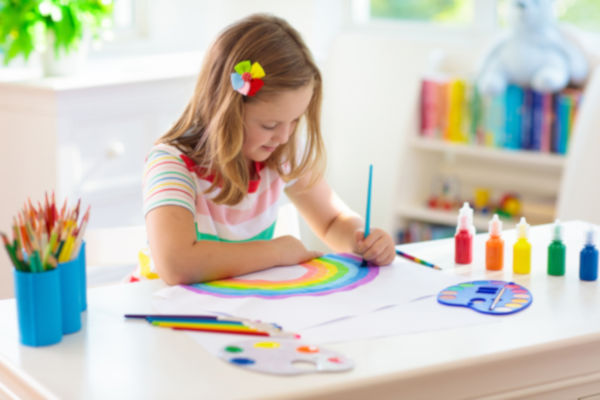
Yes, we know it makes a huge mess but now is not the time to worry about the state of your carpet. So, grab the PVA glue and get crafting together.
46. Make A Musical Instrument
An oldie but a goodie. Put some rice or pasta (a good way of using up any panic bought supplies) in an empty plastic bottle. Seal it up and you have a shaker. Experiment with different fillings to see what kind of sounds you can make.
47. Make A Dinosaur World With Modelling Clay
If you have modelling clay then why not make a dinosaur world. Paint the inside of a shoe box and make some dinosaurs and volcanoes for a cute little scene.
48. Draw A Road Map For Cars
Stick several sheets of paper together or use an old roll of wallpaper if you have any to create a large sheet on the floor. Draw roads, buildings, parklands and more to make a road map for toy cars to drive along.
49. Transform Old Boxes Into A Large Fort
Let your child take over the living room with a giant cardboard creation. A great way to use up all those boxes from all that extra online ordering you have been doing since lockdown began.
50. Make A Potato Character
Lots of schools did this for World Book Day as a low-cost alternative to dressing up. Take a potato and turn it into your favourite book character by adding accessories and a scene in a shoe box.
51. Make A Butterfly Mural
Make lots of pretty butterflies out of paper and place them on the wall. Add flowers, tree branches, and leaves for a pretty mural. It beats trying to buy paint online to redecorate.
52. Make A Marble Run With Toilet Roll Tubes
If you didn’t panic buy 3000 loo rolls, then you might struggle to get enough cardboard tubes, but you can also use tubes from foil and cling film etc to make your own version of a marble run. Take it further and use any leftover pipe bits you may have and see how far you can make that marble travel.
53. Bubble Painting
Add food colouring to bubble mixture and blow bubbles onto paper to create some unique art.
54. Make A Poster For Your Window
Lots of children are making pictures of rainbows to place in their windows for people to see as they walk by. Your child could do a rainbow, or perhaps something that says thank you to NHS workers.
55. Make A Robot Costume With A Cardboard Box
Cut out holes in the side and top of a large cardboard box for your child’s head and arms to go through to transform them into a robot. Your child could decorate the box to add buttons using foil or paint.
56. Make A Teddy Bear Window Display
An alternative to the poster in the window; some children are putting teddy bears in their windows for other children to spot as they walk in their communities getting exercise. You could take it one step further by making into a display with lights, pictures, and more.
57. Make Play-Dough
Making your own playdough is really easy and there are plenty of recipes available online. You can add food colouring and glitter for extra sparkle, and play-dough is great for developing those fine motor skills.
58. Draw Family Portraits
Get your children to draw family portraits. Perhaps you could pose with some props to make it more entertaining for them.
59. Make A Card To Send To Your Child’s Teachers
We still don’t know if children will be able to go back to school before September, so there’s a good chance that your child has already had their last day with their current teacher. Teachers are struggling with having to juggle looking after the children of key workers and creating work that children can access at home, with many also dealing with family members who may be ill. Show some teacher appreciation by getting your child to make a card or write a letter to their teacher to say hello.
60. Make A Puppet Theatre
If you have some old cardboard boxes lying around, you could convert them into a puppet theatre. Your child could also make puppets using characters drawn onto card, cut out, and stuck onto lollipop sticks or similar as a way to grip them. See what stories they can come up with!
61. Make Rainbow Crayons
Children seem to amass crayons, which then snap into smaller pieces, so you just end up with a bundle of broken pieces. You can chop them up into smaller pieces, place into silicon moulds, and melt in the oven on a low heat for around 20 minutes. The result is a new collection of rainbow crayons.
62. Paint Together
Get a large sheet of paper and get the whole family involved in painting a mural.
63. Draw A Movie With A Stop Motion App
Draw characters and cut them out. Draw backgrounds for the characters. Use a stop motion app on your phone to create a stop motion movie.
64. Make Paper Dolls
Make paper dolls and draw clothes and features on each one. Perhaps see if your child could invent a character for each doll, giving them a name and thinking about what they may like and dislike.
65. Junk Modelling
Put that recycling to good use and encourage your child’s creativity by enabling them to create models using plastic and cardboard packaging. See who can build the tallest tower or the coolest robot.
66. Try Origami
There are loads of tutorials online for basic origami shapes and this ancient craft is surprisingly therapeutic.
67. Paint With Cars
Dip the wheels of a toy car into paint and then drive it along the paper to create unique patterns.
Activities To Do In The Kitchen
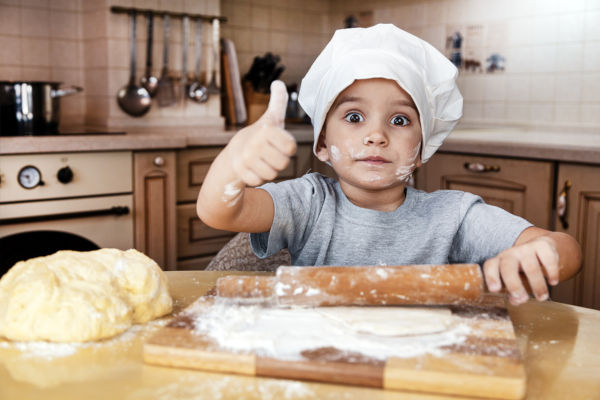
These fun activities will fulfil two purposes: they will keep your children entertained and they will stop them pestering for snacks.
68. Make A Hedgehog Loaf
Making bread is easier than you think (if you can find bread flour in the shops) and you can easily shape the dough into a hedgehog using scissors to snip in the spikes (there are plenty of tutorials available online). Use olives for the eyes and nose and don’t forget to add an egg wash for a finished glaze.
69. Make Mini Pizzas
You can either make your own base, or use pitta breads to keep it simple.
70. Make Fruit Kebabs
Try and find fruit of every colour of the rainbow to make this activity more fun.
71. Make Cakes
Kids love making cakes. They love decorating cakes. They also love eating cakes. So, it’s a triple win. Keep it simple with a plain sponge and throw in lots of sprinkles. Alternatively, for older children, consider a house “bake off” competition, or a competition amongst classmates with photos shared via WhatsApp groups.
72. Make Fudge
Another sweet treat and it’s easier than you might think (with recipes available online) but you do need to supervise children very carefully as the mixture gets hot!
73. Teach Your Child How To Wash Up
Forget all the social media posts from parents who are teaching their little darlings five languages and calculus during lockdown. How about looking at some basic life skills, such as how to wash up?
74. Plan A Meal
Let your child choose what they want for dinner and get them to plan a meal, with dessert, and teach them how to cook their chosen dishes.
75. Build A Structure With Cocktail Sticks & Fruit
Use pieces of soft fruit as links between cocktail sticks to create structures. Can your child build a really tall tower?
76. Make A Rainbow With Sugar Water
Mix science with sugar in this task. You will need a tall thin jar, sort of like an olive jar, and four other jugs, cups, or glasses. In each of the jugs add 100ml of water and colour each one with a different food colouring. Add three spoonful’s of sugar to one jug, two spoonful’s to the next jug, one spoonful to the next jug, and leave the last jug sugar free. Now slowly pour in the contents of each jug (starting with the one with the most sugar and finishing with the one with the least) into the jar. All being well you should have a rainbow in your jar, and it’s all down to something called density, which you can read up about online.
77. Re-Grow A Lettuce
Don’t throw away your little gem lettuce hearts! Instead, once you have stripped the lettuce of its leaves, see if you can grow any more by leaving the heart in a shallow dish of water, changing the water each day. You may find some new leaves appear in the middle. In these times of panic buying, every little helps.
Garden Activities
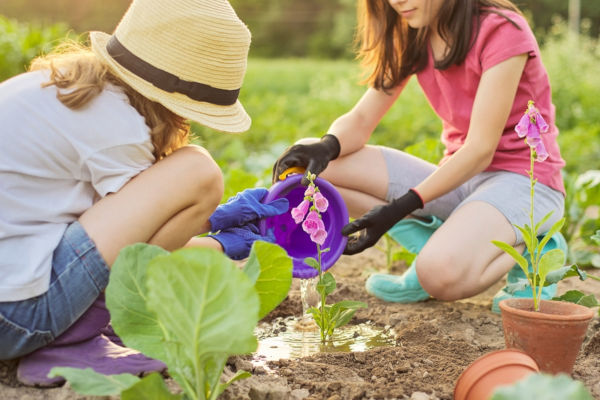
Here are some fun things to try in the garden, or possibly when out on your once a day exercise with the kids.
78. Set Up An Obstacle Course
Use hula hoops, skipping ropes, boxes, whatever you can find.
79. Plant Some Vegetables
Now is the perfect time to get growing. Peas, carrots, and potatoes are all very easy to grow.
80. Chalk Art
You could draw in the garden, or some children have been drawing rainbows on pavements when out on walks to try and brighten the days of others.
81. Paint With Water
Paint brush and a bucket of water is all you need for patio painting.
82. Find Rocks To Paint
Painting rocks and hiding them in places for others to collect has been popular for a while now. At the moment, it’s best not to hide any because of the possibility of virus transmission, but there’s nothing stopping you collecting some to paint and hide at a later date.
83. Do Bark Rubbings
Either on trees in your garden or when out on a walk. See what patterns emerge. Do different trees make different patterns?
84. Do A Hula Hoop Challenge
How long can your child hula hoop for? How long can you hula hoop for?
85. Wash The Car
With plenty of time on your hands there is no excuse for a filthy car.
86. Go On A Bug Hunt
How many different insects can you find in the garden? There are plenty of bug hunt worksheets available online if you want to tick off a few.
87. Feed The Birds
Make fat balls with seeds and lard, or throw them some chopped pieces of apple. Can you identify the different birds that visit your garden?
Fitness Activities
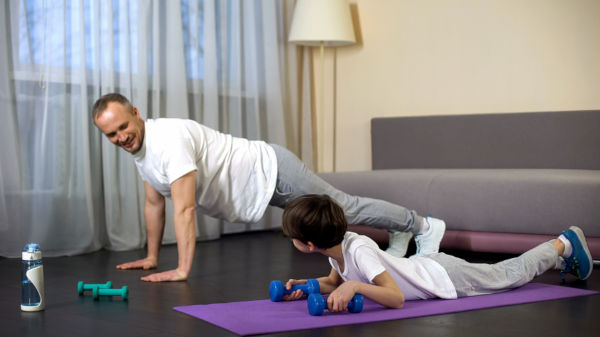
It is more important than ever that we keep fit. Not only will it help us to fight off the virus, but exercise also boosts our mental health. Children need to be doing around an hour of physical activity each day, and even if we can’t leave the house to go play on a beach (unless you’re lucky enough to live by one) there are still plenty of ways to remain active at home.
88. Cosmic Kids Yoga
This fabulous YouTube channel has been around for a while, and each video offers up a different story with yoga poses built in. It’s a lovely way to introduce your child to yoga and the stories cover a whole range of themes, from animals, to fairytales and even Pokemon!
89. PE With Joe Wicks, The Body Coach
Every weekday morning at 9am Joe Wicks, AKA The Body Coach, is live streaming a PE lesson for the whole family. No equipment is needed, and you can do it indoors. Your whole body will receive a workout and it’s an energising way for everyone to start the day. As an added bonus, Joe Wicks is donating 100% of his proceeds to the NHS.
90. Go For A Spotting Walk
Families can leave the house once a day for exercise, providing they walk / run / cycle from their homes and don’t drive anywhere. If your children are reluctant to take a walk then make up a spotter sheet for things to find on the way. Think about the things you might find in your local area, whether it be urban or rural, and design your spotting sheet based on that. It might contain things such as “bird house”, “stop sign”, “oak tree”, etc.
91. Andy’s Wild Workouts
CBeebies’ Andy Day hosts this series that will get children moving. In each episode, Andy explores a different part of the planet, encountering animals. During the show he encourages children to do various moves with him. Each episode is only six minutes long, so they are ideal for younger children who have short attention spans.
92. Make A Maze On Your Driveway / Patio
If you have a driveway or patio you could make a maze using masking tape or chalk for children to run around. With chalk, write some challenges they must do as they pass certain spots, such as “do ten star jumps” or “touch your toes.”
93. Have A Dance Party
Dancing is great exercise, so get everyone moving with a party. If you have some glowsticks lying around from old party bag favours these will add to the groovy atmosphere.
94. Fitness Bingo / Uno / Playing Cards
Come up with a series of tasks, such as “do 10 squats”, “run up the stairs”, etc. and then either make up a bingo game or assign each move to a card in a deck – you can use Uno cards or playing cards. Take turns to pick out a bingo number of pull out a card and complete the assigned task.
95. Simon Says
An oldie but a goodie. This game is particularly good for kids who hate the idea of exercise and need to be encouraged through stealth.
96. Go For A Bike Ride
The current guidelines state that you can leave your house once a day for exercise, providing you do not drive anywhere to do so. Going for a bike ride is therefore ok, even if your children just ride around the block on your housing estate.
97. Balloon Volley Ball
Try and keep a balloon in the air as long as possible without holding onto it. If it lands on the floor everyone has to do 10 star jumps.
98. Penny Pick Up
A brilliant game for dexterity and balance. Drop some of your copper coins on the floor and get your children to pick them up using their toes.
99. Dance Lessons With Oti Mabuse
Strictly Come Dancing star, Oti Mabuse, is live streaming dance lessons on her YouTube channel every weekday at 11.30, with previous lessons all accessible on her YouTube account.
100. Tumbletots At Home
Tumbletots provide fun balance and coordination classes for young children. On their Facebook page, they are currently streaming “Tumbletots at Home” videos, which will encourage your little ones to get moving. They also have lots of other great ideas to promote activity.
101. Play Grab The Ball
This game is ideal for younger siblings as it promotes coordination. Children should sit opposite each other with their legs stretched apart and feet touching each other’s so that their legs form a diamond shape. Place a ball in the middle of the “diamond.” The aim of the game is to be the first person to grab the ball, but they can’t touch it until the caller (AKA you the parent) says the word “ball”. The caller shouts out body parts that each child needs to touch on their own body, i.e. nose, eyes, mouth, shoulders, knees, and keeps doing so until the caller says “ball”, at which point the children can try and grab the ball.
You’ve Got This

If lockdown seems overwhelming, the important thing to remember is that you are doing your bit to keep everyone safe. Even if the only thing you manage to achieve today is getting your children to move from their bedrooms to the living room whilst still connected to their iPads then that is ok. Don’t be too hard on yourself. Shut off social media. You will get through this. You’ve got this.




